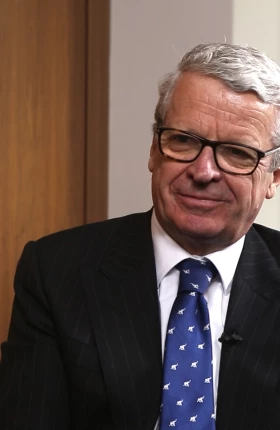When Risto Siilasmaa became chairman of Nokia, in 2012, the company was flirting with bankruptcy. Equity analysts had turned their backs on the company, and consumers were flocking to Apple and Android phones.
Nokia has transformed many times in its 150-year history. It started as a paper mill and expanded into forestry, rubber, and cables before settling on phones and networking equipment in the 1980s, at the dawn of the mobile era.
Its most recent transformation may be its biggest pivot yet. Under Siilasmaa’s leadership, Nokia sold its phone business to Microsoft and its mapping business to German automakers. It doubled down on networking—or what Siilasmaa calls the “programmable world,” buying Siemens out of a partnership and acquiring Alcatel-Lucent in 2015. Along the way, Nokia’s enterprise value increased 20 times.
Siilasmaa recently sat down with Tuukka Seppä, a BCG senior partner and managing director, to discuss Nokia’s latest transformation. Excerpts follow.
You became chairman in May 2012. One could call that the low point in the very long history of Nokia. Could you describe why you decided to accept that challenging position, and what Nokia was like at that time?
We were planning the biggest layoffs in the company’s 150-year history. Our revenues declined by 26% in the quarter when I was appointed chairman. Our net operating losses were over $2 billion during the first six months of that year. I could continue that long list of dark tidings.
We understood the challenge, and I decided to do things differently. In order to change the leadership and board practices of Nokia in this very difficult time, I laid out golden rules for our board work. Of course, I discussed those with the board members, and we approved them together after making some changes to my original proposal. I’ll mention three rules out of seven.
The first one was assume the best of intentions from others. We want to be honest about bad news. One of my favorite sayings is that bad news is good news, good news is no news, and no news is bad news. The second was that we would be a data-driven board and we would work harder than normal or average boards do.
The third rule out of the seven is that any meeting where we don’t laugh out loud is a complete failure. We need to have fun, especially when we deal with the most difficult and most emotional decisions, like selling the handset business to Microsoft.
Why did you decide to center the current Nokia on the network business instead of the device business, which used to be the focal point of Nokia?
It was not a decision to focus on the old definition of networking, but on what we call the programmable world, where we program the environment we live in. Much of that programming will be done through artificial intelligence, configuring the environment where we live in real time, based on the data that is gathered through the billions of sensors that will be surrounding us.
Since May 2012, when you became chairman, Nokia’s enterprise value has grown by approximately 20 times. There were many external moves during that period. What were the internal moves that made this transformation work?
If you take the point of view of looking at our employee base currently, we have 106,000 employees, but over 99% of them did not carry a Nokia badge just three years ago. It has been a complete removal of engines, the cabin, and the wings in midflight of an airplane and reassembling the airplane to look very different while in midflight.
How have you been able to preserve Nokia as Nokia, even though everybody has essentially changed their jobs?
It’s almost as if the company has a soul. I really feel that the soul survived this operation.
What advice would you have for other leaders who are undergoing a major transformation such as the one you went through?
Number one: Don’t believe all the advice that you get. Think for yourself. What makes sense? Number two: Be a paranoid optimist. It’s a good way to navigate through hard times. Number three: Gather great people around you and change people very quickly if you need to.
About Risto Siilasmaa
At a Glance
Born in Finland, 1966
Education
Engineering degree, Helsinki University of Technology
Career Highlights
2012–present: Chairman, Nokia (interim CEO 2013–2014)
2006–present: Chairman, F-Secure
1988–2006: Founder, president, and CEO, F-Secure






